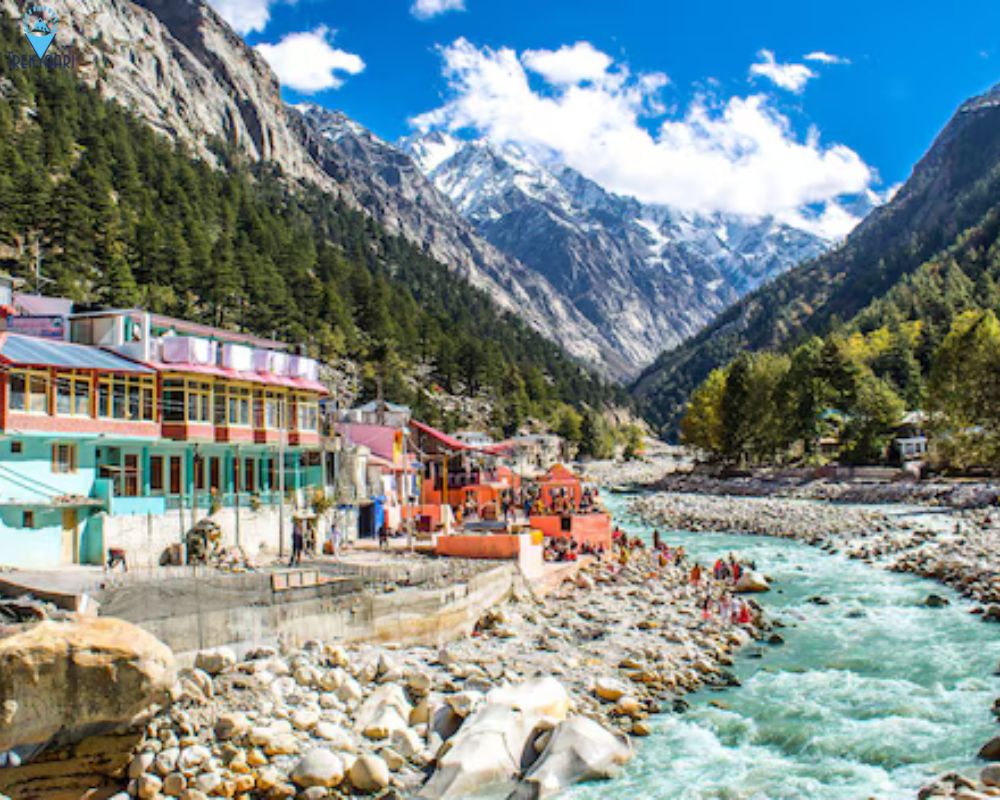Introduction to the Char Dham Yatra
The Char Dham Yatra refers to the pilgrimage to four holy sites in the Indian state of Uttarakhand: Yamunotri, Gangotri, Kedarnath, and Badrinath. These sites hold immense religious significance and are believed to cleanse devotees of their sins and grant salvation.
Understanding the Spiritual Significance
The Char Dham Yatra is considered a journey that must be undertaken by every devout Hindu at least once in their lifetime. Each of these four sites is dedicated to a different deity:
- Yamunotri: The source of the Yamuna River, dedicated to Goddess Yamuna.
- Gangotri: The origin of the Ganges River, dedicated to Goddess Ganga.
- Kedarnath: A sacred site dedicated to Lord Shiva.
- Badrinath: A revered temple dedicated to Lord Vishnu.
The Char Dhams: Badrinath, Kedarnath, Gangotri, and Yamunotri
The Char Dham Trek involves visiting all four sites, each of which is situated at high altitudes and requires a significant amount of trekking. Pilgrims typically start their journey from Haridwar or Rishikesh, which are the main hubs, and then travel to each site, trekking through challenging terrain.
Overview of the Char Dham Trek Distances
The Char Dham Trek Distance can vary depending on the route taken, but it generally spans over several hundred kilometres. The distance to each Dham and the trekking paths will be discussed below. It is important to understand that the trek is not just a physical challenge but also a deeply spiritual journey.
Total Trekking Distance from Start to Finish
The entire Char Dham Yatra involves several days of travel and trekking, typically requiring 10-15 days to complete. The distance covered by road and trek can total anywhere between 500 to 600 km, depending on the route taken. The trekking distances themselves, however, range from 6 km to 18 km per site.
Average Trekking Times and Physical Demand
Each Dham requires different amounts of time to reach by foot. The physical demand on trekkers is moderate to high, as the paths can be steep and challenging. The average trek duration per day can range from 4 to 8 hours, depending on the altitude and the weather conditions.
Detailed Distance Breakdowns for Each Char Dham Site
Let’s take a look at the trekking distances to each of the Char Dhams, the routes, and their challenges.
Yamunotri Distance: Route and Challenges
The journey to Yamunotri, the first Dham in the trek, involves a 5 km trek from Janki Chatti to the Yamunotri temple. The trail is scenic, with lush forests and beautiful views of the surrounding mountains. The climb, however, is quite steep, and at an altitude of about 3,293 meters (10,804 feet), the trek can be challenging for first-time trekkers.
Gangotri Distance: Trail Details and Scenery
The distance from the road head to Gangotri is approximately 18 km, and pilgrims often take vehicles up to Bhagirathi Shila and then trek to the temple. The trek takes around 5-7 hours, and trekkers pass through forests, clear streams, and snow-capped peaks. The altitude of 3,048 meters (10,000 feet) can make the climb taxing.
Kedarnath Distance: Scenic and Physical Aspects
Kedarnath, situated at an altitude of 3,583 meters (11,755 feet), is the most challenging of the Char Dhams. The trek from Gaurikund to Kedarnath is around 16 km, ascending steeply through rough terrain. The high altitude and rugged terrain require a good level of fitness and endurance. The trek can take anywhere from 6 to 8 hours, depending on one’s pace.
Badrinath Distance: Pilgrimage and Cultural Insights
Badrinath is the final destination of the Char Dham Yatra and the easiest in terms of trekking distance. While the trek to Badrinath itself isn’t as physically demanding, visitors must trek from the Mana Village to the temple, which is a distance of around 3 km.
Best Time to Embark on the Char Dham Trek
Seasonal Weather and Its Impact on the Trek
The best time to undertake the Char Dham trek is from May to October. During these months, the weather is pleasant, and the paths are more accessible. Winter (November to March) can bring heavy snowfall, making the trails treacherous and often impassable.
Optimal Months for Clear Paths and Views
The months of May, June, and September are considered the best for trekking, as the weather is warm enough for comfortable trekking, and the views are clear. July and August bring monsoon rains, which can make the trek slippery and difficult.
Essential Preparations for the Char Dham Trek
Physical Fitness Requirements and Preparation Tips
Since the trek to each Dham involves long and sometimes strenuous treks at high altitudes, trekkers must be physically prepared. Cardiovascular endurance, leg strength, and general fitness are essential. Prepare with regular hikes and endurance training to ensure your body can handle the altitude and terrain.
Essential Gear for Trekking and Climate Adaptation
The trekking gear should include:
- Sturdy hiking boots
- Warm clothing (even in summer)
- Rain gear
- Sunscreen and sunglasses
- A good trekking pole
Ensure you have essential health and safety supplies, such as medications and first-aid kits.
Trekking Routes and Alternative Paths
Common Routes Taken by Pilgrims
Most pilgrims and trekkers follow the main routes from Haridwar to each Dham. These routes are well-marked, though they can be crowded during peak season.
Scenic or Less Traveled Paths for Adventure Seekers
For trekkers seeking more challenging routes, there are less-travelled paths to each site, including alternate trekking routes through Janki Chatti to Yamunotri or Kedarnath’s alternative paths. These paths may be longer and more difficult but offer stunning natural views and fewer crowds.
Accommodation and Facilities along the Char Dham Trek
Types of Lodging and Their Proximity to Sites
Along the trek, pilgrims can find guesthouses, Dharamshala (pilgrim rest houses), and tents. The Yamunotri and Gangotri routes have basic accommodations, while Kedarnath and Badrinath offer more structured lodging. Pre-booking accommodations is advisable during peak seasons.
Food, Water, and Other Essential Facilities Available
Basic food and water are available along the route, though quality and cleanliness can vary. Carry enough bottled water and snacks to ensure you’re well-nourished throughout the trek.
Cultural Significance of the Char Dham Trek
Local Traditions and Rituals at Each Site
At each Dham, there are specific rituals and ceremonies that are an integral part of the pilgrimage. Witnessing these rites, such as the evening Aarti at Kedarnath or the Yamunotri Kunda ritual, enriches the experience and adds to the spiritual significance of the trek.
Key Festivals and Pilgrimage Ceremonies
Festivals like Makar Sankranti, Kedarnath Dham’s reopening ceremony, and Badrinath’s annual winter break are significant events that draw many pilgrims. Attending these festivals can deepen your connection with the region’s culture and heritage.
Health and Safety Tips for Trekking the Char Dham
Common Health Risks and Precautions
Altitude sickness is a significant risk, particularly in Kedarnath. To minimize risks, trek slowly, acclimatize properly, and stay hydrated.
Emergency Facilities and Contacts along the Route
Medical assistance is available at key locations, including Gaurikund and Badrinath. It is essential to know the nearest emergency contacts and the route back in case of a health emergency.
Environmental Impact and Sustainable Trekking Practices
Importance of Sustainable Practices on the Trail
With the increasing number of trekkers, it’s vital to reduce your ecological footprint. Follow responsible trekking practices such as leaving no trace, disposing of waste responsibly, and respecting local wildlife.
Tips to Minimize Your Ecological Footprint
- Carry reusable water bottles.
- Avoid using plastic bags.
- Stick to marked trails to preserve the environment.
Char Dham Trek Distance Description for Trekyaari
The Char Dham Trek, a revered pilgrimage in Uttarakhand, covers four sacred destinations: Yamunotri, Gangotri, Kedarnath, and Badrinath. This spiritual journey spans several hundred kilometres, with trekking distances ranging from 6 km to 18 km per site. Starting from Haridwar or Rishikesh, the trek offers stunning views of the Himalayas and requires physical endurance due to its challenging terrain and high altitudes. Trekyaari ensures an unforgettable experience with well-guided treks, providing a mix of adventure, devotion, and cultural insights at every step.















